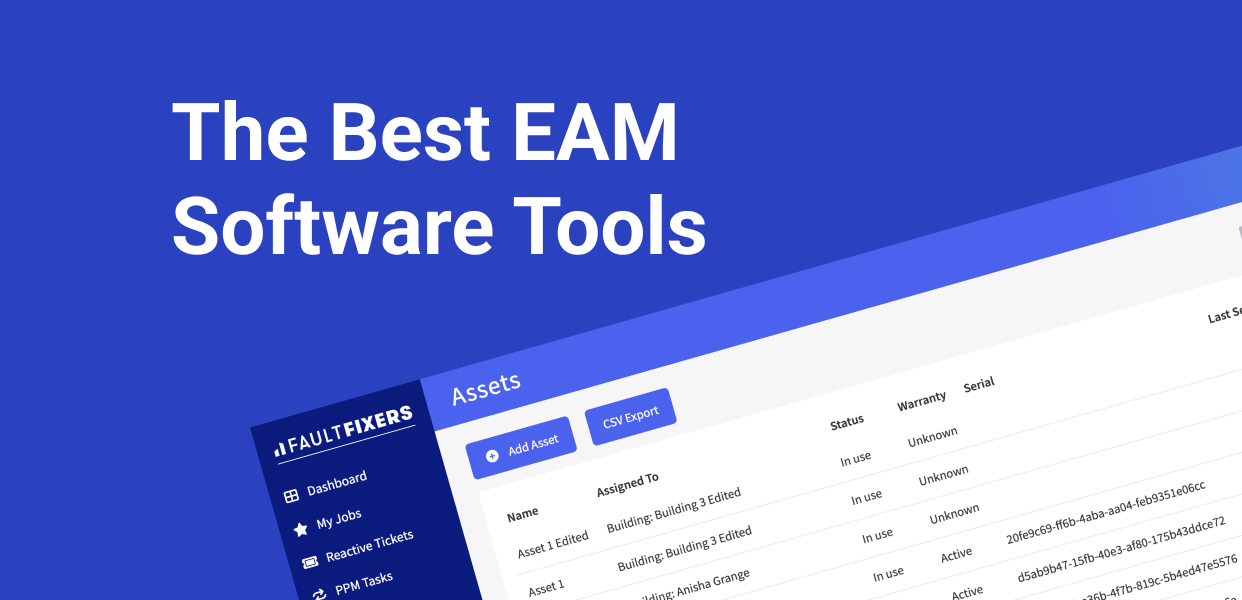Choosing the right Enterprise Asset Management (EAM) platform in Delhi can make or break uptime, compliance, and lifecycle costs. Below you’ll find a concise, vendor-agnostic overview of the top options organizations in Delhi are adopting in 2025—covering core features, strengths, and typical trade-offs—so you can shortlist the best fit for your operation size, industry, and budget.
List of Best EAM Software in Delhi (2025)
| Serial No. | Company Name | Key Features |
|---|---|---|
| 1 | FacilityBot | Bulk asset import, fault reports & PM checklist linking, asset grouping, QR-based mobile checks, unlimited assets |
| 2 | Sage X3 | Project costing, change control, HR & payroll integration, stock & purchasing management, industry KPIs |
| 3 | SAP | Analytics & reporting, EHS management, spare parts handling, risk & criticality management, collaborative asset management |
| 4 | IBM Maximo | Inventory optimization, preventive maintenance, storeroom management, workflow automation |
| 5 | AssetWorks | Work order management, property & inventory management, maintenance planning, data-driven reporting |
| 6 | ServiceNow | Asset lifecycle monitoring, asset relationship management, hardware & software inventory tracking |
| 7 | eMaint (CMMS) | Condition monitoring, inventory scheduling, downtime tracking, asset logs |
| 8 | Infor EAM | Materials management, inspection handling, budget management, work management, asset tracking |
| 9 | Atera | Remote monitoring, patch management, network discovery, ticketing |
| 10 | Jira Service Management | Asset reviews & tracking, asset discovery, incident & problem management, migration support |
1. FacilityBot
What it is: FacilityBot is a cloud-based asset management platform built to simplify day-to-day maintenance and make asset histories truly actionable.
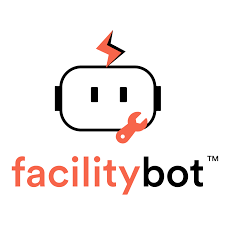
Standout capabilities (Delhi use cases):
- Bulk asset import at setup to get your registry live quickly.
- Link everything to assets—requests, fault reports, and PM checklists—so teams see progress and history from the asset view.
- Group assets to review maintenance history for entire categories at a glance.
- QR-based mobile checks: technicians scan an Asset ID in the mobile app to pull up histories, fault reports, and PM records on the go.
- Unlimited assets supported so growth (or seasonal surges) doesn’t force a plan change.
Ideal for: Facilities teams that want quick deployment, strong mobile workflows, and clear visibility across corrective and preventive tasks without tool sprawl.
2. Sage X3
Sage X3 offers comprehensive control over business operations, helping organizations manage project costing, HR, payroll, inventory, and asset analytics.
Features:
- Project costing & financial management
- Change control management
- Integrated HR & payroll
- Stock & purchasing management
- Industry KPIs tracking
Pros: Efficient asset lifecycle management, easy reporting, compliance readiness, and longer asset lifespan.
Cons: Integration with existing systems can take time.
3. SAP
SAP is one of the most robust asset management software solutions, ideal for large enterprises in Delhi that require detailed maintenance scheduling and data-driven insights.
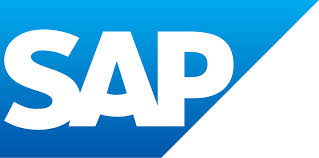
Features:
- Analytics & reporting
- Spare parts handling
- Risk & criticality management
- Collaborative asset management
Pros: Centralized data, quick collaboration, enhanced fault analysis, real-time monitoring.
Cons: Expensive, no free trial, limited flexibility.
4. IBM Maximo
IBM Maximo provides predictive and preventive maintenance features along with deep asset lifecycle tracking for complex organizations.
Features:
- Inventory optimization
- Preventive maintenance
- Storeroom management
- Workflow automation
Pros: Seamless integration, compliance-ready, efficient collaboration.
Cons: Time-intensive startup, complex customization, limited job view flexibility.
5. AssetWorks
AssetWorks is highly effective for managing infrastructure, fleets, and property assets in Delhi.
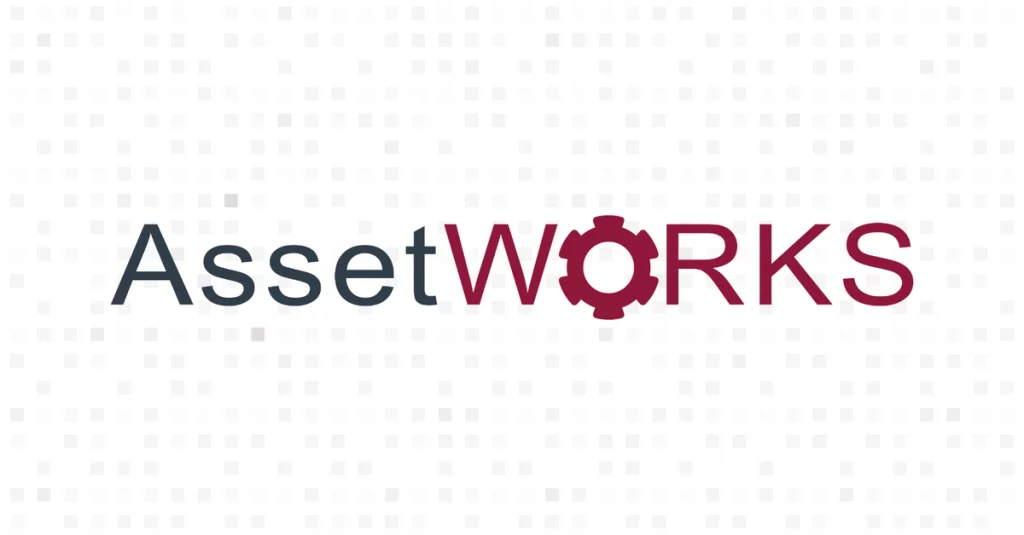
Features:
- Work order management
- Property & inventory management
- Maintenance planning
- Data-driven reporting
Pros: Centralized data, remote access, better efficiency, extended asset life.
Cons: Limited integration options, tough data imports, invoice issues.
6. ServiceNow
ServiceNow automates IT lifecycle management and integrates field services with daily operations.
Features:
- Asset lifecycle monitoring
- Hardware & software inventory
- Asset relationship management
Pros: Scalable, customizable dashboards, accurate incident management.
Cons: Complex customization, no pivot tables, default role creation limitations.
7. eMaint
A CMMS-based system, eMaint simplifies predictive maintenance, downtime tracking, and compliance.
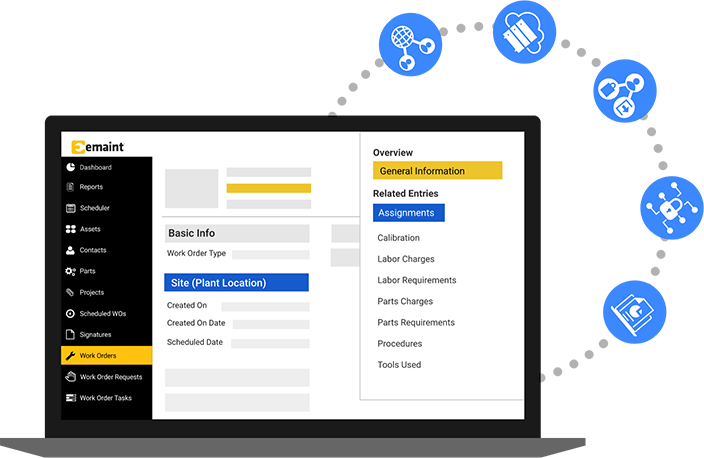
Features:
- Condition monitoring
- Inventory scheduling
- Downtime tracking
- Asset logs
Pros: Higher productivity, better ROA, refined maintenance.
Cons: Complex implementation, no drag-and-drop, limited reporting.
8. Infor EAM
Infor EAM is widely used for monitoring KPIs, budgets, work management, and asset tracking.
Features:
- Budget & work management
- Inspection handling
- Materials management
Pros: Centralized asset data, actionable insights, reduced construction costs.
Cons: No free trial, lacks collaboration features, no voice-to-text support.
9. Atera
Atera is a cost-effective, cloud-based solution designed for IT consultants and managed service providers.
Features:
- Remote monitoring
- Patch management
- Network discovery
- Ticketing
Pros: Unlimited endpoint management, personalized alerts, automatic updates.
Cons: Complex patching tools, limited documentation, no multi-monitor support.
10. Jira Service Management
Jira helps streamline workflows and improve team collaboration in asset management.
Features:
- Asset reviews & tracking
- Asset discovery
- Incident & problem management
Pros: Flexible data structure, improved onboarding/offboarding, better customer experience.
Cons: Reporting issues, broken workflows, difficult migration.
How to Choose EAM Software in Delhi (2025)
- Fit to Maintenance Strategy: Ensure strong support for your mix of corrective, preventive, and condition-based maintenance.
- Mobile Execution: QR/NFC scanning, offline capability, and quick forms speed technician work.
- Integration Footprint: Map ERP/finance, HR, BMS/SCADA, and procurement touchpoints upfront.
- Total Cost of Ownership: Consider licenses, implementation, training, and data migration—not just sticker price.
- Scalability & Governance: Role-based access, audit trails, and multi-site controls matter as programs mature.
- Usability & Time-to-Value: Faster onboarding and clean UX save months of change management.
Conclusion
The best EAM software in Delhi for 2025 will align with your operational maturity, integration needs, and on-the-ground realities—like technician mobility and vendor coordination. Platforms such as FacilityBot emphasize rapid rollout and mobile-first asset histories, while suites like SAP, IBM Maximo, and Infor EAM bring broader, enterprise-grade controls. Shortlist two or three, pilot with real w
